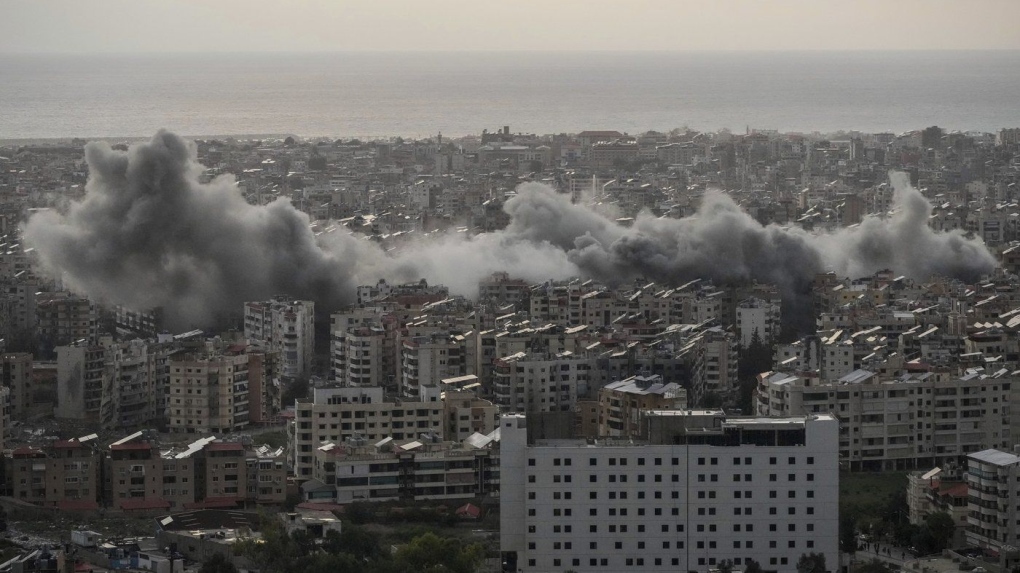Hezbollah Launches Massive Attack on Israel Following Israeli Strikes in Beirut
On Sunday, Hezbollah mounted an unprecedented counteroffensive against Israel, unleashing a barrage of rockets and projectiles in retaliation for Israeli airstrikes that targeted the militant group’s command centers in Beirut. This dramatic escalation underscores the increasing tensions in a region already on edge due to ongoing conflicts.
Hezbollah’s Rocket Barrage
The Israeli military reported that approximately 250 rockets and other projectiles were fired by Hezbollah, marking one of the heaviest attacks by the group in months. The intense rocket fire managed to penetrate deep into Israeli territory, reaching areas near Tel Aviv. While Israel’s Iron Dome missile defense system successfully intercepted a significant number of the incoming rockets, some still made it through, causing panic and disruption.
Israel’s Retaliatory Airstrikes
In response to the rocket attacks, Israeli forces conducted a series of airstrikes targeting Hezbollah positions in southwestern Lebanon. One such airstrike resulted in the death of a Lebanese soldier and injured 18 others, as reported by Lebanon’s military. However, the Israeli military emphasized that their operations were aimed specifically at Hezbollah militants and were not intended to target the Lebanese army.
Escalation in Beirut
The fighting intensified over the weekend with Israeli airstrikes in central Beirut. The assault caused at least 29 deaths and left 67 individuals wounded, according to reports from Lebanon’s Health Ministry. As the military strikes continued on Sunday, dark smoke billowed over Beirut, a stark reminder of the dire situation, as Israel focused on dismantling Hezbollah’s command and intelligence units located in the group’s stronghold in the Dahiyeh suburbs.
Context of Ongoing Conflict
This marked escalation comes in the wake of the October 7, 2023, Hamas-led assault on Israel from the Gaza Strip, which initiated a broader conflict. Hezbollah, a steadfast ally of Hamas and backed by Iran, has framed its rocket launches as an act of solidarity with Palestinians, further complicating the already fragile situation in the region.
Deaths and Displacement: The Human Cost
The toll of escalating violence has been staggering. According to Lebanon’s Health Ministry, Israeli attacks have resulted in the deaths of over 3,700 people in Lebanon, with around 1.2 million individuals—approximately a quarter of the nation’s population—displaced from their homes. For Israel, the conflict has claimed the lives of around 90 soldiers and 50 civilians, and northern regions have seen massive displacement, with about 60,000 Israelis fleeing their homes to escape the fighting.
Moreover, the violence has not only affected the general populace but has also tragically claimed the lives of over 40 Lebanese soldiers, despite the Lebanese army primarily staying out of direct engagement in this conflict.
Political Reactions and Regional Implications
Amid the chaos, Lebanon’s caretaker Prime Minister, Najib Mikati, condemned the airstrikes, accusing Israel of undermining U.S.-led efforts for a cease-fire. He characterized the assaults as “a direct, bloody message rejecting all efforts and ongoing contacts” aimed at bringing about an end to the warfare. His remarks reflect a growing concern among Lebanese leaders about the conflict’s potential to destabilize not only Lebanon but also the region as a whole.
Global Response and Future Prospects
The international community is closely monitoring the situation, with calls for de-escalation coming from various quarters. The potential for further violence remains high, as both Hezbollah and Israel appear poised for continued confrontation. The ramifications of this conflict extend beyond military concerns, touching on humanitarian crises and geopolitical tensions that have far-reaching implications.
Conclusion
The recent surge in hostilities between Israel and Hezbollah signifies a troubling escalation in a region already fraught with conflict. As both sides prepare for what could be an extended period of violence, the humanitarian cost continues to rise, with thousands affected by the ongoing strife. The hope for a peaceful resolution remains uncertain as the cycle of retaliation persists, further entrenching divisions and complicating any potential pathways to peace.
